Keto-enol tautomerism is observed in :
(i) a.PhCHO , b.PhCOCH3
c. PhCOPh , d. PhCOCH2COCH3
Video Solution
Text Solution
(I) (i),(b,d)
(a) and (c ) do not have α−H atom, so they do not show tautomerism.
(ii) (a,c,d)
(b) does not show tautomerism, since two double bonds would be in cumulative position, which is unstable. C−2 is sp-hybridised and the linear structural unit cannot be bridged with only two C atoms but can be bridge with four C atoms and hence it does not show tautomerism.
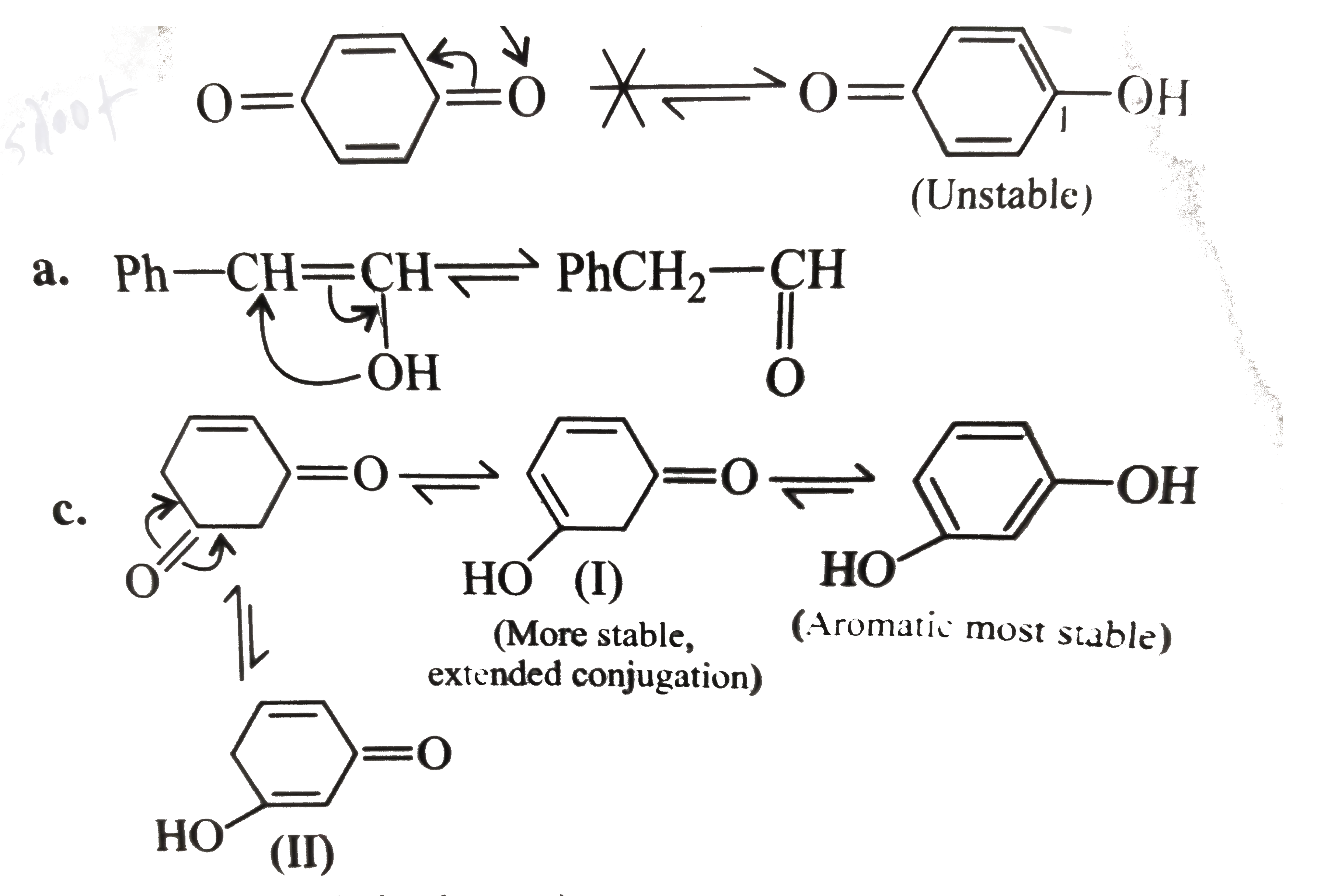
(II) I=i. d>a>b>c(diketone>Ketone-aldehyde>Ketone>aldehyde)
ii.d>c>b>a(80%>76%>7.7%>1%)(diketone with (ph) group>diketone>Keto easter>diester)
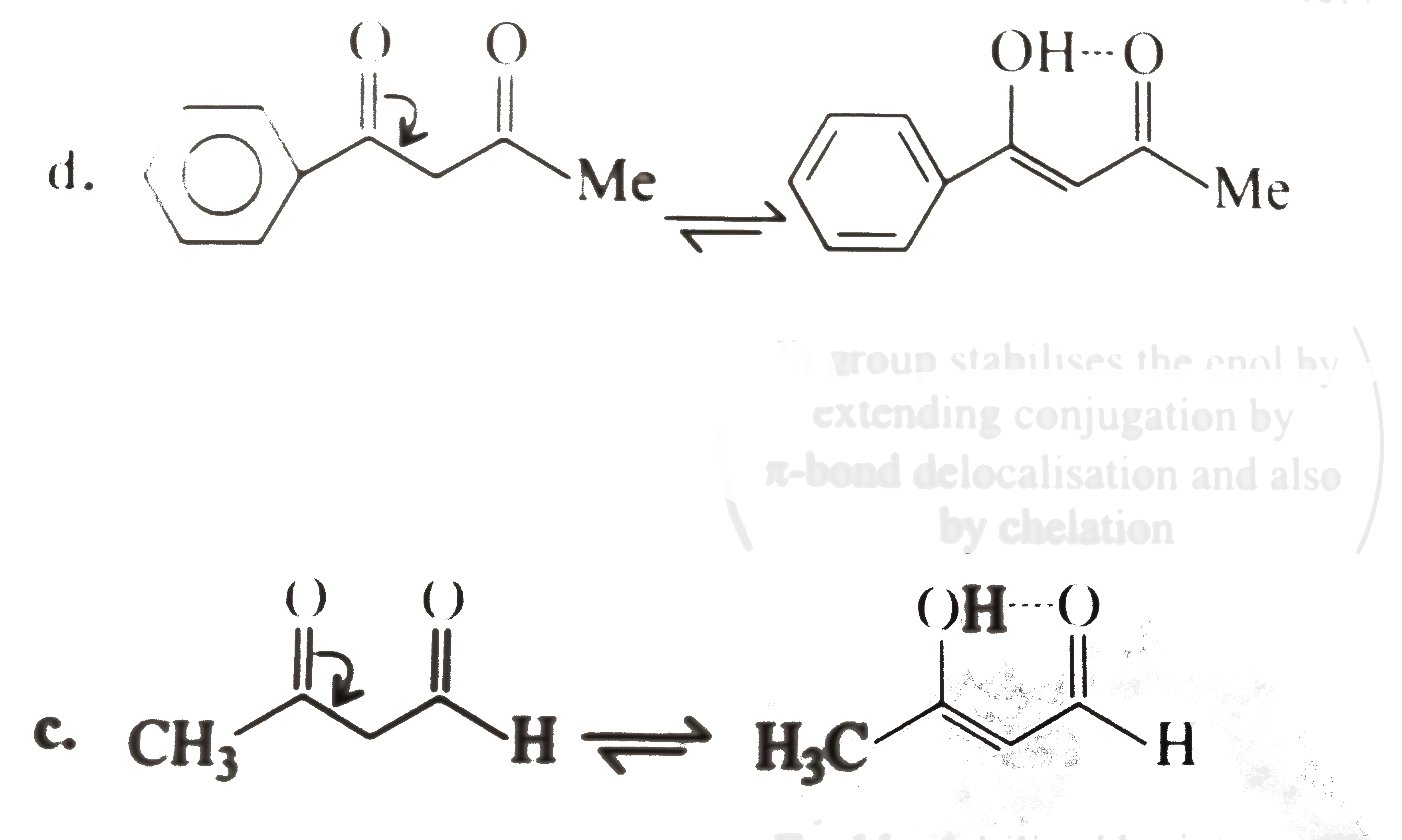
d. Esters do not show tautomerism due to cross conjugated resonance structrues, which descrease the ability of (C=O) group of easter in stabilising the enol from.
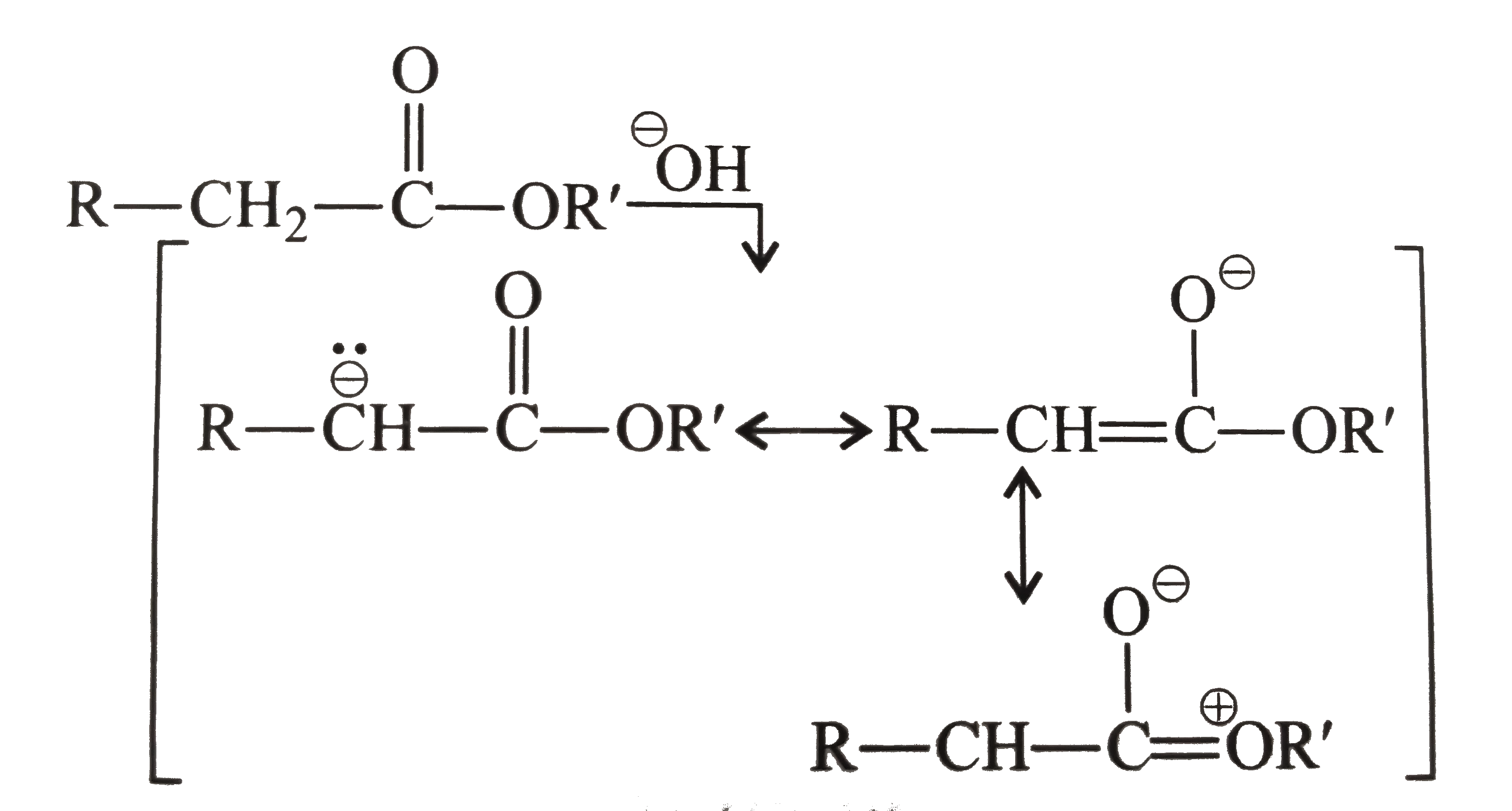
So diethyl malonate does not show tautomerism.
(iii)b>a>c
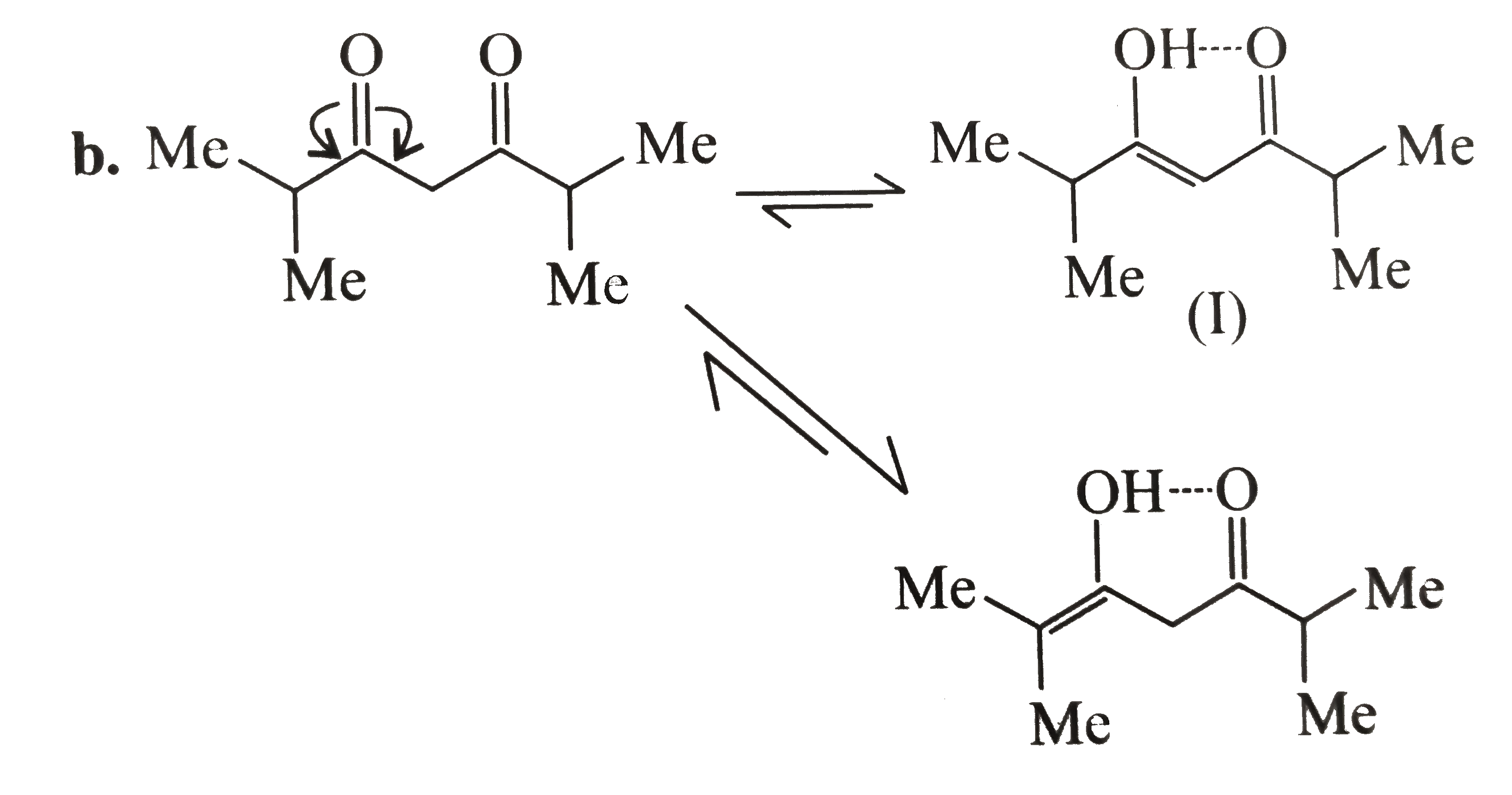
(I) is more stable than (II), since (II) is more stained 5-membered ring joining the (C==C) bond.

Both (b) and (a) are stabilised by intramolecular H-bonding. But (b) shows more enol content than (a) since (b) is more substitued alkene.
In (c ) there is only one α−H atom and its acidity is decreased by ¯e-donating (+I effect of )isopropyl group It shows less enol form.
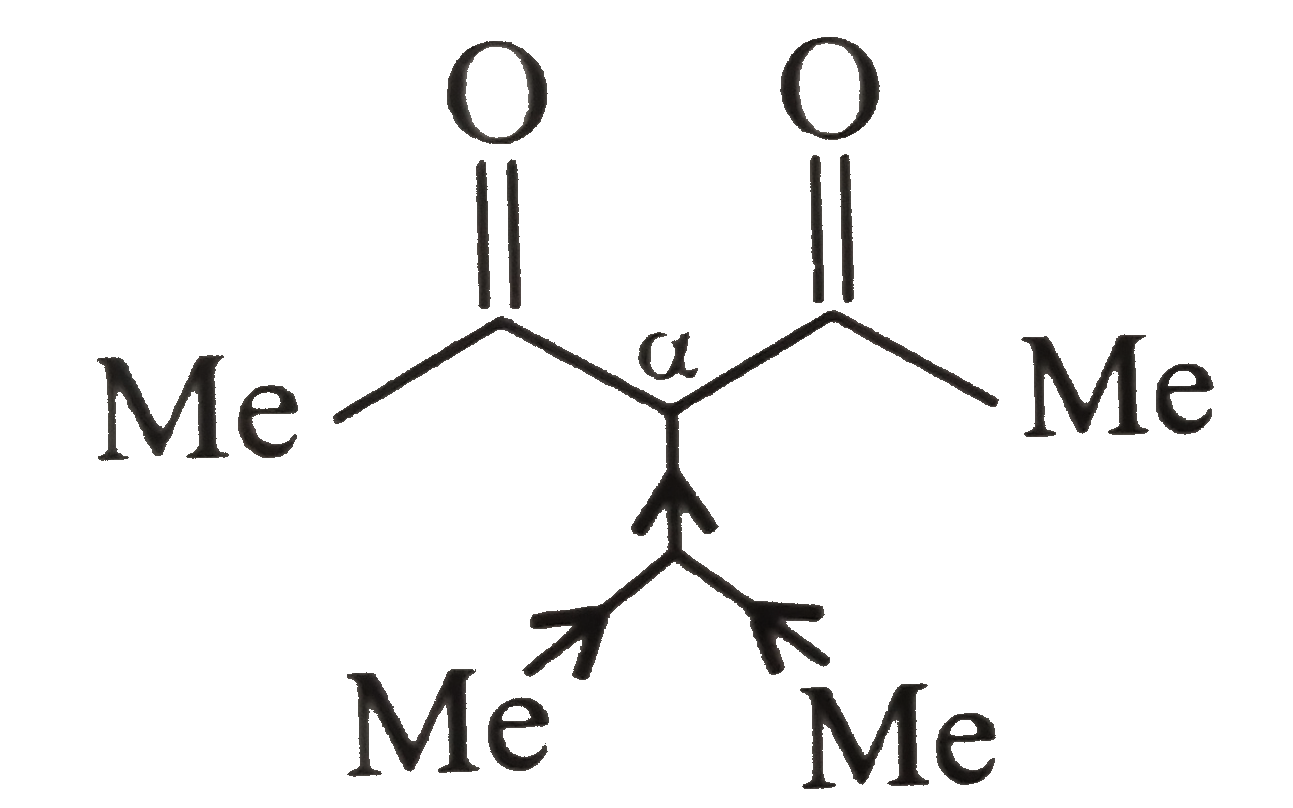
III. Effect of solvent on enol content c>d>b>a. Benzene (non-polar) > acetone (slightly polar) > methanol (polar, protic solvent) >H2O (highly polar, protic solvent)
|
Updated on:21/07/2023
Related Playlists
- BOOK - CENGAGE CHEMISTRY ENGLISHCHAPTER - ISOMERISMEXERCISE - Example15videos
ISOMERISM
- BOOK - CENGAGE CHEMISTRY ENGLISHCHAPTER - ISOMERISMEXERCISE - Exercise19videos
ISOMERISM
- BOOK - CENGAGE CHEMISTRY ENGLISHCHAPTER - IONIC EQUILIBRIUMEXERCISE - Archives Subjective28videos
IONIC EQUILIBRIUM
- BOOK - CENGAGE CHEMISTRY ENGLISHCHAPTER - NCERT BASED EXERCISEEXERCISE - Chemical Equilibrium73videos
NCERT BASED EXERCISE
Similar Questions
Keto enol tautomerism is not observed in:
View SolutionWrite the IUPAC name of CH3COCH2COCH3.
View SolutionWrite the IUPAC name of CH3COCH2COCH3.
View SolutionWrite the IUPAC name of CH3COCH2COCH3.
View SolutionHow many of these compounds can undergo cannizzaro reaction here
CH3CHO,CH3COCH3,HCHO,Ph−CHO,Ph−CO−CHO,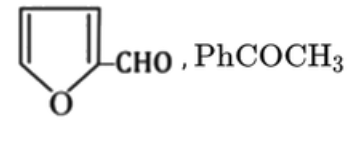 , PhCOCH3View Solution
, PhCOCH3View SolutionIdentify the electrophile center in the following :
(i) CH3CHO (ii) CH3CH=CH2 (iii) CH3COCH3View SolutionWrite the IUPAC name of : CH3CH2COCH3.
View SolutionGive the IUPAC name of the following :
(i) HCHO
(ii) CH3COCH3View SolutionWrite IUPAC name of the compound : CH3COCH2COCH3.
View SolutionWrite IUPAC name of the compound : CH3COCH2COCH3.
View Solution

